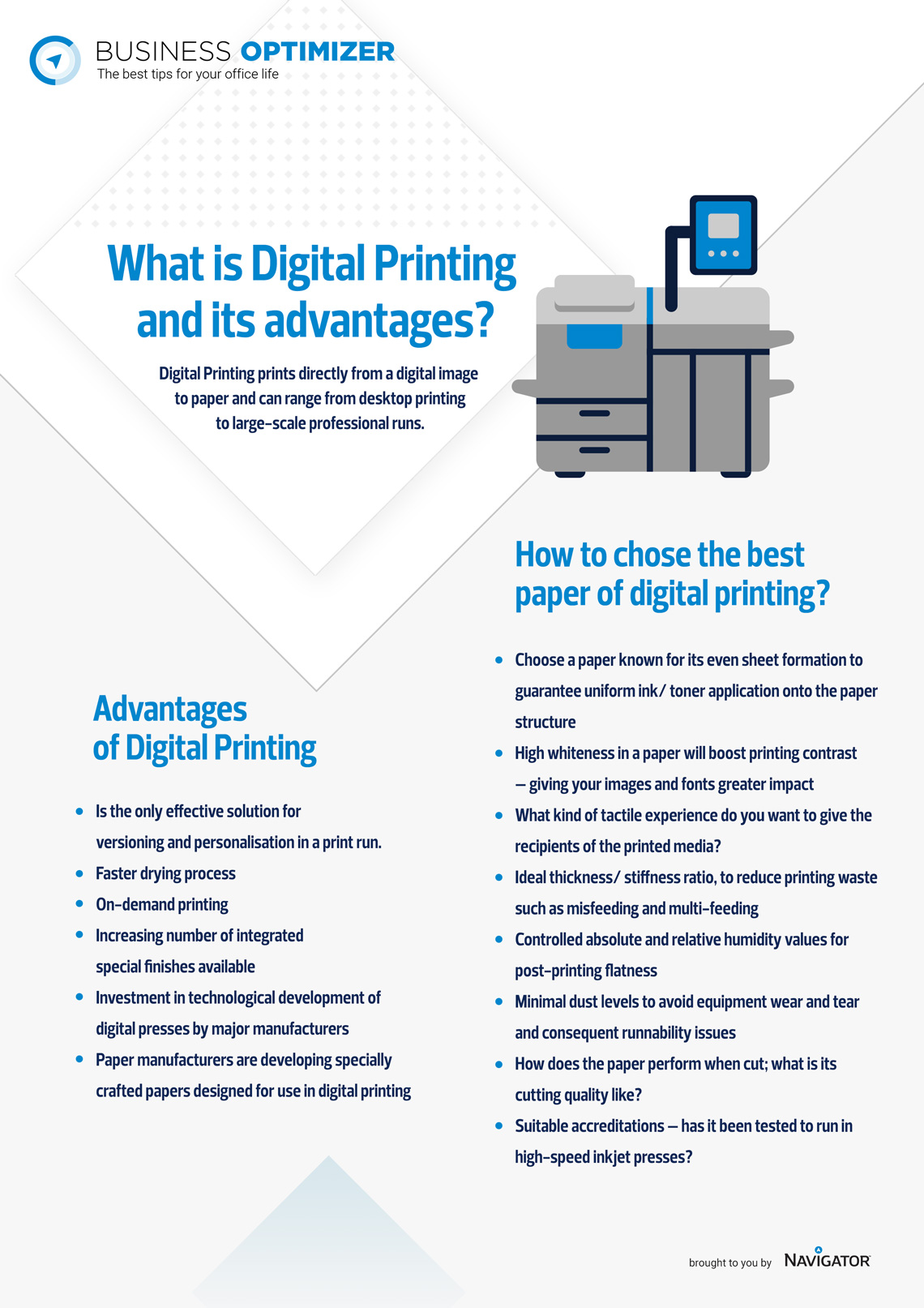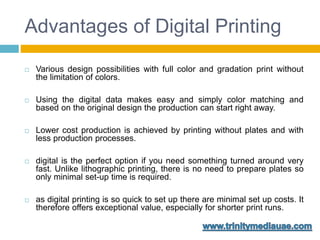The 2-Minute Rule for Digital Printing
The 2-Minute Rule for Digital Printing
Blog Article
The Best Strategy To Use For Digital Printing
Table of ContentsSome Known Facts About Digital Printing.The Single Strategy To Use For Digital PrintingThe smart Trick of Digital Printing That Nobody is DiscussingFascination About Digital PrintingThe smart Trick of Digital Printing That Nobody is DiscussingThe Digital Printing Diaries
Variable information printing, such as direct mail with customized codes and addresses, is preferably fit for digital printing. Digital quick printing only needs four actions of design, review, printing and binding to obtain whatever done. Digital fast printing has an unequaled advantage: print on need.According to PMMI, electronic printing allows brands and manufacturers to react quickly to consumer needs while improving the supply chain, lowering warehousing cost and waste, and delighting in faster time to market. That all audios wonderful, yet exactly how does this technology do all that? The significant differentiator of these modern technologies is that there are no set-up costs and no plates with electronic printing.
Some Known Details About Digital Printing
According to Wikipedia, the best difference between digital printing and traditional methods such as lithography, flexography, gravure, or letterpress - Digital Printing is that there is no need to replace printing plates in digital printing, whereas in these analog printing approaches the plates are repeatedly changed. This causes quicker turn-around time and reduces price when utilizing electronic printing.
Fast manufacturing indicates getting your item to market quicker. It also means it's much easier and faster to make adjustments later on, when you transform a dish, add a SKU, or develop seasonal packaging. Digital printing is extremely flexible, so it's easy to make modifications to the plan layout promptly. Everything goes back to the plates.
With standard printing approaches, short-run printing is simply not feasible. Since a wonderful design can make or damage your product, electronic printing continually develops top quality, clear and vivid graphics each time.
Digital printing is the process of printing digital-based photos straight onto a range of media substrates. There is no requirement for a printing plate, unlike with countered printing. Digital files such as PDFs or desktop computer publishing documents can be sent out directly to the digital printing press to print on paper, picture paper, canvas, material, synthetics, cardstock and various other substratums.
The Best Strategy To Use For Digital Printing
According to PMMI, electronic printing permits brands and producers to react quickly to customer demands while enhancing the supply chain, decreasing warehousing expense and waste, and enjoying faster time to market. That all noises great, yet how does this innovation do all that? The significant differentiator of these innovations is that there are no set up fees and no plates with digital printing.
According to Wikipedia, the best distinction in between digital printing and traditional approaches such as lithography, flexography, gravure, or letterpress is that there is no requirement to change printing plates in digital printing, whereas in these analog printing approaches the plates are continuously changed. This causes quicker turnaround time and decreases cost when using electronic printing.

A Biased View of Digital Printing
With conventional printing techniques, short-run printing is simply not feasible. Due to the fact that a great design can make or break your item, electronic printing consistently creates top notch, clear and vibrant graphics each time.

According to PMMI, electronic printing permits brand names and makers to respond promptly to customer demands while boosting the supply chain, reducing warehousing price and waste, and delighting in faster time to market. That all noises terrific, however exactly how does this technology do all that? The major differentiator of these technologies is that there are no set-up fees and no plates with digital printing.
The 20-Second Trick For Digital Printing
According to Wikipedia, the best difference between electronic printing and traditional techniques such as lithography, flexography, gravure, or letterpress is that there is no requirement to change printing plates in electronic printing, whereas in these analog printing techniques the plates are repetitively changed. This causes quicker turnaround time and reduces cost when using digital printing.
Digital printing is extremely adaptable, so it's easy to make adjustments to the bundle design rapidly. It all goes back to the plates.

Some Known Incorrect Statements About Digital Printing
Digital printing is the procedure of printing digital-based pictures straight onto a selection of media substrates. There is no requirement for a printing plate, unlike with countered printing. Digital data such as PDFs or desktop computer posting data can be sent straight to the electronic printing press to print on paper, picture my review here paper, canvas, textile, synthetics, cardstock and various other substratums.
Report this page